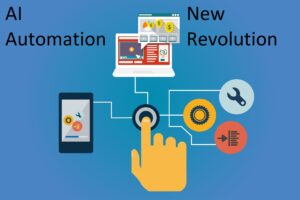With consumer demand climbing, regulations tightening and the cost of doing business rising, facilities must optimize their packaging line efficiency or face losing to their competition. Could automation powered by artificial intelligence be the solution they’re searching for?
Why Facilities Need to Optimize Packaging Lines
Online shopping’s popularity surged exceptionally high during COVID-19. While life returning to normal indicates demand should follow suit, it hasn’t plateaued. Instead, it has continued rising — e-commerce grows approximately 23% annually on average. Conventional manufacturers are finding it challenging to withstand this lasting change.
“The e-commerce sector’s need for efficiency rises alongside consumer demand. Unless facilities adapt, they risk experiencing more and longer delays as their workers, robots and conveyors struggle to keep up with the sheer volume of orders.”
Increased surplus waste is another contributing factor. As raw materials, storage space and transportation grow more expensive, squandering resources becomes more of an issue. For instance, warehouse rent cost $9.72 per square foot in 2023, up 20% year over year, underscoring the need to reduce packaging line losses.
How AI Can Optimize Packaging Line Efficiency
Automation is one of AI’s most significant ways to optimize packaging line efficiency. For example, integrating it into an automated bagger would make automatic measurement and capacity analysis faster and more accurate. This machine’s return on investment is already quick, so integration could make it more accessible to smaller businesses.
Combining deep learning, natural language processing, surveillance systems and computer vision would enable rapid decision-making. Models could automatically analyze packages as they move along conveyors to determine how to maximize capacity. This way, packers know precisely how to fill the boxes to reduce wasted space and minimize insert usage.
Alternatively, this system could identify and address packaging line bottlenecks by analyzing workers and robots in real-time. For example, it could detect that a poorly lubricated machine is moving inflexibly, causing it to lag. Alternatively, it may notice individuals’ movements repeatedly slow after a certain amount of time between breaks.
The algorithm could automatically send its findings to management or develop a solution itself, depending on its model type and predefined parameters. Combining historical and real-time datasets would improve its accuracy. Either way, it can increase workplace efficiency substantially, helping facilities meet consumer demand and reduce surplus waste more easily.
The Benefits of Leveraging AI Over Alternatives
Since dozens of automation technologies exist, facility managers may wonder why AI is the ideal solution. Its processing, analysis and decision-making capabilities accelerate the packaging line significantly, resulting in a faster return on investment for facilities. Over time, these profits and savings add up.
However, this technology doesn’t just automate processes — it understands its actions. Its autonomy enables it to perform tasks with minimal human intervention, even if an unexpected event happens. Minor variations don’t cause it to malfunction, unlike other solutions.
“AI’s rapid processing speed is another novel benefit. It can analyze massive datasets in seconds, making complex decisions almost instantaneously. It can evaluate a situation, assess its options and respond faster than a human.”
Another benefit of this technology is its efficiency. Businesses that adopt it can improve performance and reduce delays, increasing their productivity by 40% if using generative models. Such significant gains would inevitably result in higher customer satisfaction and lower waste-related losses.
Most importantly, AI can potentially result in a long-term positive cash flow. Machine learning models can adapt over time as they process new data, meaning they’re future-proof. As long as administrators continuously feed them with real-time information streams and audit their behaviour, they’ll remain useful for years.
How to Integrate AI Automation Into the Workplace
Many companies in this sector have razor-thin operating margins, so investing in a cutting-edge solution is often out of the question. While AI typically requires a high initial investment, outsourcing development and streamlining computing resource consumption would make it more accessible to smaller businesses.










